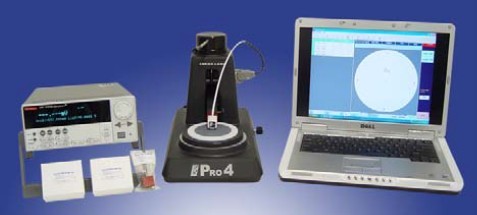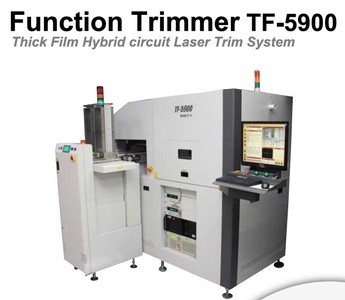关于 Signatone公司

In 1955, Pete Clerx served as an electronics and mechanical engineer working for Philips Semiconductor Division. Finding resistivity probing to be cumbersome with manipulators, he designed the first self contained four point probe head. The probe head reduced probing time from 15 minutes to about 30 seconds. He also developed joystick controlled manual probes for regular probing applications.
In the late fifties and early sixties, Pete continued to do research for Motorola and Westinghouse Research. Here he worked on improved versions of his 4 point probe head. After having made several manipulators and probe heads for various semiconductor companies, he recognized a growing demand for these types of tools everywhere in Silicon Valley. He began designing his own micropositioner in his garage and started selling several to the local semiconductor manufacturers including National, Fairchild, Hewlett Packard and Signetics. About this time, he noticed two commercially available 4 point probes. He decided to start his own company. In 1965, Pete founded the proprietorship called Signatron.
Soon, Pete designed a small probe station (S-1002) and also a four point probe stand (S-300). In 1970, the four point probe stand S-301 became an instant success and there were requests from all around the country and even some in Europe. A sales force of manufacturers reps were hired to cover most of the US market. Mr. Clerx went to incorporate and discovered that a Signatron was already registered in California. So, he changed the name to Signatone. The business then employed 8 people.
The S-1100 angle lapping machine was introduced in 1971, followed by the S-1000 probe station and a new independent X-Y-Z motion micropositioner called the S-725. The S-725 was also an instant success and is still a good value today. We estimate over 6000 of this model are in the field today. In 1975, the S-1003 was the first probe station with the hot chuck incorporated as part of the probe station.
In 1975, Pete was ready to retire and move to Hawaii. Brent Dickson, who had worked at Motorola in Phoenix for six years then in 1968 CO-founded Advanced Memory Systems (now Intersil) was ready to run a small business. In 1976, Brent purchased Signatone from Pete. Soon Brent had several ideas and began to expand the product line. Three probe stations entered the market for the new 4 inch wafer sizes with 25 micron geometries.
In 1977, the stand alone hot chuck in a shoe box was introduced and began to be a big seller for CV analysis applications. In 1978, the S-200 micron analytical probe station with a 200X magnification microscope entered the market. The following year, the first pattern probe station designed specifically for probing test pattern die was introduced and sold like wild fire. The S-1007 was also the first 5 inch probe station.
As we entered the 1980's, the business had tripled in size since 1975 and now offered a product line of 5 probe stations and three hot chucks as well as the 4 point probe systems. Also new on the market was Bausch & Lomb Microzoom optics allowing up to 1000X magnification. Signatone went back to the drawing board and near the end of 1981, we introduced a 5 inch sub-micron analytical probe station, the S-250. The S-250 began to sell well and has continued to be an excellent analytical probe station still a good value today. There are over 400 S-250's placed through out the world and 97% are still in full operation.
Generally through the early 1980's we continued to improve existing products and upgrade to 5 inch then 6 inch models. We introduced a compound sub-micron resolution micropositioner in 1983. In 1985, after two years of development, we introduced the S-450 programmable semiautomatic analytical probe station. The linear motor provided superior resolution and accuracy to competition and it met with good success. In 1988, we introduced the S-460 which was the first "hands-off", completely controlled by a mouse, analytical probe station. The S-460 met with considerable success.
Nineteen-ninety saw the introduction of programmable high resolution micropositioners (CAP-945) and several eight inch probe stations. Also, seeing another good business opportunity to serve the Semiconductor industry, we merged with Lucas Labs, a vacuum process diagnostics company. The merger increased our size 50% over night. However, the probing division has remained in the mainstream of the probing market and today we offer a product line of over three hundred products and numerous options allowing customers to get just what they need.
In 1992, we introduced the eight inch version of the S460, the S480. Windows software control was added. In 1995, we introduced a low current, Triaxial chuck, local dry/dark chamber and Triaxial probes for use with parametric analyzers for measuring ±1 femto Amperes.
In 1997 we introduced the CheckMate series probe stations, a completely upgradable platform from manual to motorized, with joystick and ultimately the Checkmate 500 probe station with automated, hands off control. The CM100-CM500 probe stations have proven to be user friendly and therefore a favorite among users all around the world.
The Checkmate series probe stations have replaced the S-1170 probe station, the S-480 8 inch semi-automatic probe station and the XXC 8 inch semiautomatic probe station. The upgradable Checkmate series probe stations are designed for easy integration of various accessories including hot/cold chucks, local dry/dark chamber, lasers, emission detection systems, RF probes and much more. The Checkmate series probe stations allow our customers the freedom to upgrade their equipment as their applications may change in an ever changing industry.
In 1999 we introduced the 12 inch (300mm) Checkmate line. Using a larger base than the CM100-CM500 the CM112-CM512 series share the same upgrade capabilities and accessory integration.
Signatone's mission is to continue to provide necessary solutions for characterization, failure analysis, and verification of integrated circuits for semiconductor manufactures throughout the world.



